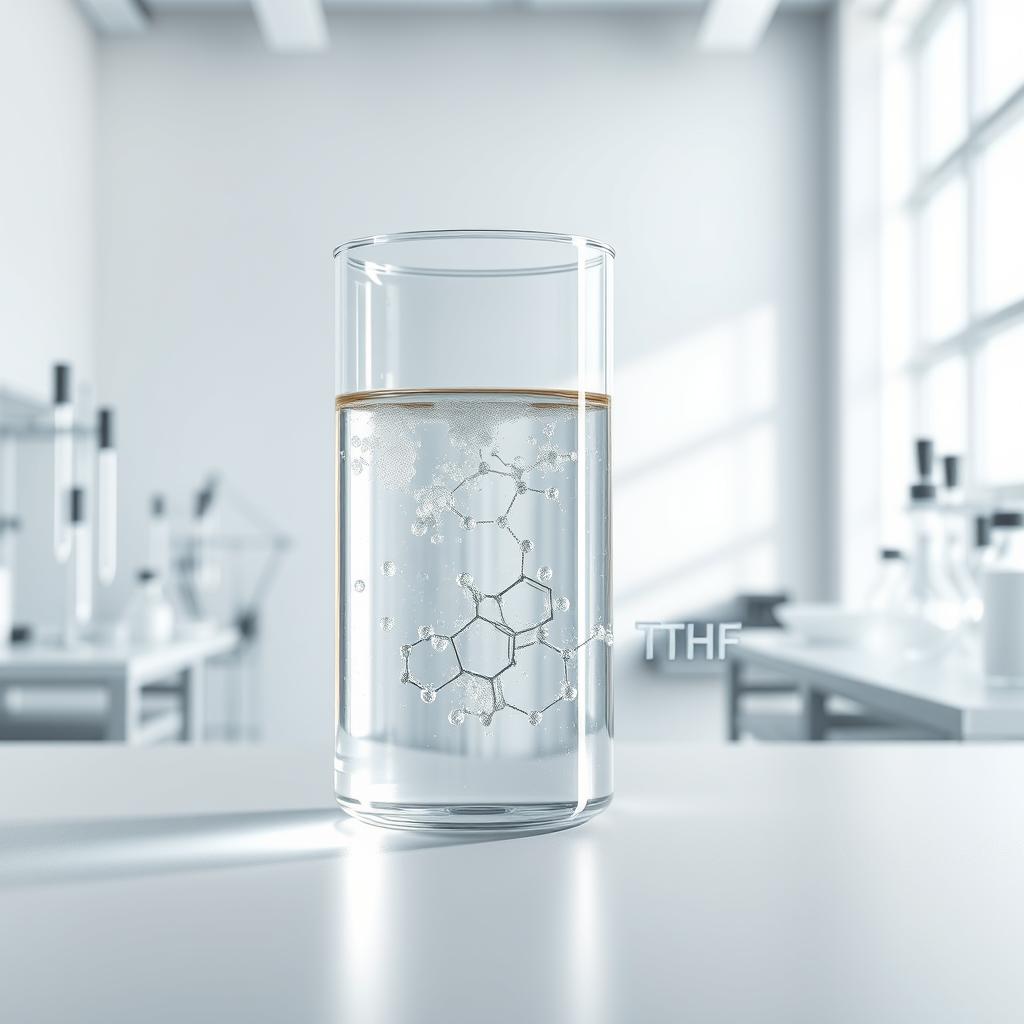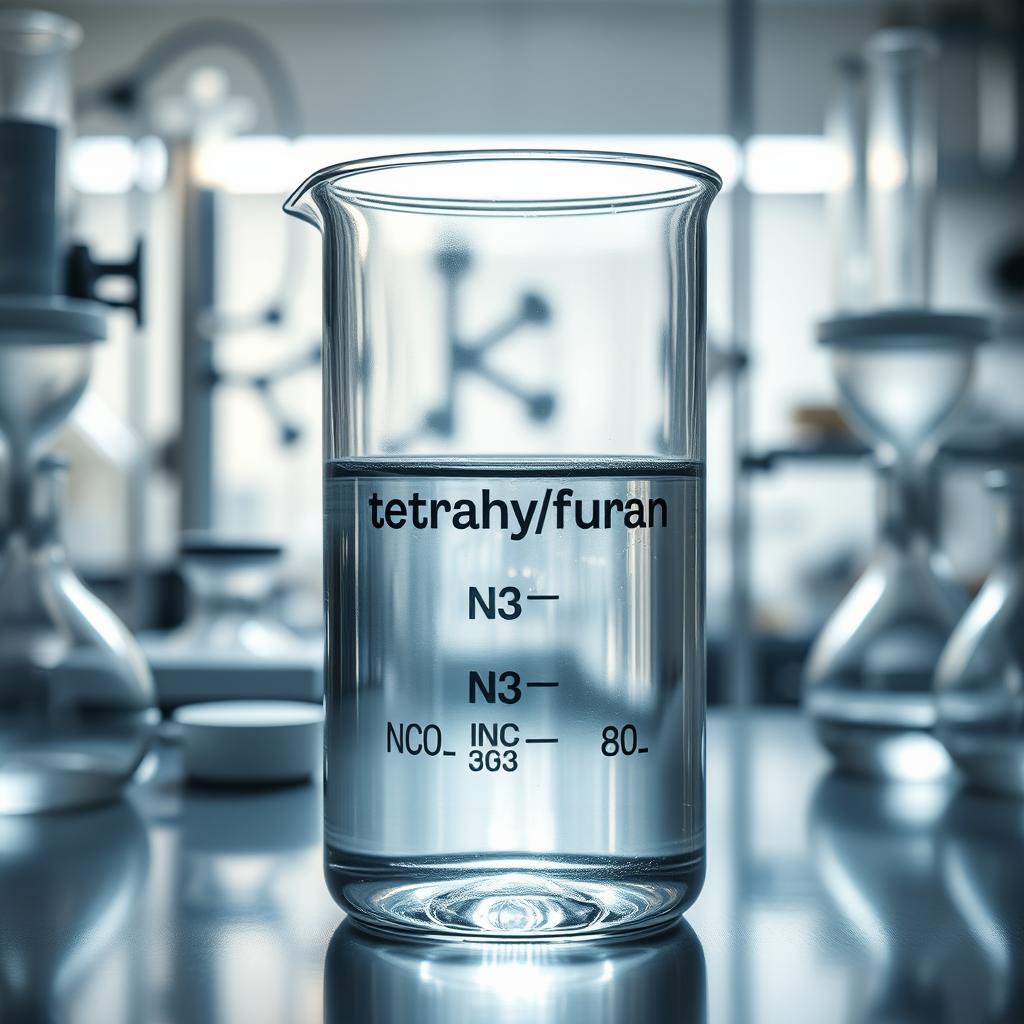Tetrahydrofuran (THF) is a critical solvent in the polymer industry due to its exceptional ability to dissolve a wide range of polymers and its role in facilitating polymerization reactions. As a highly polar and aprotic solvent, THF is widely used in the production of polytetramethylene ether glycol (PTMEG), which is essential for manufacturing spandex fibers and high-performance elastomers. Additionally, THF plays a crucial role in anionic polymerization, enabling the synthesis of specialized polymers with controlled molecular weights and properties. Its application extends to adhesives, coatings, and PVC processing, making it an indispensable component in modern polymer chemistry and industrial formulations.
Click to use Silverigroup personal shopper services
Key Takeaways:
- Tetrahydrofuran is a widely used solvent in the polymer industry due to its excellent solvating properties.
- The use of tetrahydrofuran in polymer science is crucial for the production of polyurethane and polyvinyl chloride (PVC).
- Tetrahydrofuran applications in polymers are diverse, ranging from solvent applications to polymer processing and coating.
- The demand for tetrahydrofuran in the polymer industry is expected to grow as the demand for polymers increases.
- Tetrahydrofuran uses in polymer science have become increasingly important, making it a vital component in the production of various polymers.
Understanding Tetrahydrofuran: Basic Properties and Characteristics
Tetrahydrofuran (THF) is a versatile chemical used in many industrial processes. It’s especially important in polymerization processes with tetrahydrofuran. This is because it helps make polytetramethylene ether glycol (PTMEG), a key material in spandex fibers and high-performance elastomers. The importance of tetrahydrofuran in polymer manufacturing is huge. It’s used to make complex polymer structures. As an industrial tetrahydrofuran for polymers, it’s used in making polyurethane, PVC, and PTMEG. Its chemical structure and physical properties make it perfect for these processes.
Click to buy citric acid from Silvairgroup
Chemical Structure and Properties
THF has a five-membered ring with a single oxygen atom. This unique structure makes it highly soluble and stable. Its chemical properties are ideal for polymerization processes with tetrahydrofuran, allowing for complex polymer structures.
Physical Characteristics
THF’s physical characteristics are perfect for industrial use. Its low boiling point and high vapor pressure make it a great solvent. Its physical properties also make it suitable for industrial tetrahydrofuran for polymers, helping in making complex polymer structures.
Industrial Grade Specifications
The industrial grade specifications of THF depend on the application. Generally, THF must meet certain purity and quality standards for polymerization processes with tetrahydrofuran. The importance of tetrahydrofuran in polymer manufacturing is huge, and its industrial grade specifications are key to ensuring product quality.
Click to buy Beluga Fresh Frozen from Silverigroup
The Role of Tetrahydrofuran in Polymer Industry
Tetrahydrofuran is a key solvent in the polymer industry. It’s especially important in making polymers. As a tetrahydrofuran solvent for polymerization, it helps create polymers like polyurethane and PVC. Its special properties make it great for anionic polymerization, leading to high-quality polymers.
In polymer research with tetrahydrofuran, scientists use it as a monomer. This allows them to make complex polymer structures. The use of tetrahydrofuran monomer for polymers has brought big advances. It lets scientists make polymers with specific properties.
- Improved polymerization efficiency
- Enhanced polymer properties
- Increased versatility in polymer synthesis
Tetrahydrofuran is also a key reaction medium. It helps make a wide range of polymers, from simple to complex. Its role in polymer research with tetrahydrofuran keeps growing, pushing innovation in polymer science.

The role of tetrahydrofuran in the polymer industry is huge. It has changed how polymers are made and studied. As research finds new uses for tetrahydrofuran monomer for polymers, its importance will only grow. This will drive more progress in polymer science and technology.
| Property | Value |
|---|---|
| Boiling Point | 66°C |
| Melting Point | -108.5°C |
| Density | 0.889 g/mL |
Primary Applications in Polymer Manufacturing
Tetrahydrofuran is key in making many polymers, like polyurethane and PVC. It’s great for processing and coating because of its special properties. In the tetrahydrofuran in polymer industry, THF is used in many ways. Here are some main uses of tetrahydrofuran in making polymers:
- Polyurethane production: THF helps make polyurethane foams. These are used in furniture, cars, and buildings.
- PVC processing: Tetrahydrofuran helps make PVC. PVC is used for pipes, vinyl records, and more.
- PTMEG synthesis: THF is a key solvent in making PTMEG. PTMEG is used in spandex fibers.
In thf applications in polymers, tetrahydrofuran is very important. Its high solvency and low boiling point make it perfect for many uses. This is why tetrahydrofuran uses in polymer science keep growing.

Tetrahydrofuran is vital in making many polymers. Its uses are getting more diverse. As more products are made from polymers, tetrahydrofuran’s role will grow even more.
| Application | Description |
|---|---|
| Polyurethane production | THF is used as a solvent to manufacture polyurethane foams |
| PVC processing | Tetrahydrofuran is used to process PVC |
| PTMEG synthesis | THF is used as a solvent in the synthesis of PTMEG |
THF as a Solvent in Polymer Processing
Tetrahydrofuran (THF) is key in polymerization processes with tetrahydrofuran. It’s great at dissolving many polymers. This makes it vital for things like adhesives, coatings, and printing inks. The importance of tetrahydrofuran in polymer manufacturing is huge, helping make complex polymer structures.
Using industrial tetrahydrofuran for polymers is very important. It helps make high-quality polymers with special properties. THF is perfect for dissolving and processing polymers like polyurethane, PVC, and PTMEG. It’s a must-have in the industry.

- Efficient dissolution of polymers
- Facilitates the creation of complex polymer structures
- Enables the production of high-quality polymers with specific properties
THF’s role in polymerization processes with tetrahydrofuran has changed the game. It lets us make new products with cool properties. As we keep improving, the importance of tetrahydrofuran in polymer manufacturing will only grow. This will drive more innovation and growth in the field.
Synthesis and Polymerization Processes Using THF
Tetrahydrofuran (THF) is a key solvent in making polymers, especially through anionic polymerization. Its special properties make it perfect for this task. Research has shown THF’s versatility in many fields. THF is vital in polymerization for growing polymer chains. This is crucial for making top-quality polymers. It ensures the reaction is controlled and efficient. Also, THF helps in making advanced materials through copolymerization.
Anionic Polymerization
In anionic polymerization, THF acts as a solvent. It helps create specific polymer structures. This control leads to high-molecular-weight polymers.
Chain Growth Mechanisms
The chain growth in THF-based polymerization is complex. It involves many reactants working together. Using THF in these processes boosts reaction efficiency and yield.

Copolymerization Applications
THF is also used in making new materials through copolymerization. It helps create polymers with better strength and durability. This shows the importance of THF in material science.
Industrial Benefits and Economic Impact
Tetrahydrofuran (THF) brings many benefits to the polymer industry. It makes manufacturing more efficient and versatile. THF is used in many ways, from solvents to polymerization. This makes it key in making different materials. Some main benefits of using THF include:
- It has better solvent properties, helping dissolve and process polymers well.
- It adds versatility to polymerization, allowing for a wide variety of materials.
- It also makes manufacturing more efficient, saving costs and time.
Even with challenges, THF is vital in polymer chemistry. It brings efficiency and versatility to industrial uses. The economic benefits of THF in the polymer industry are big. It helps grow and develop many sectors.

In summary, THF’s benefits and economic impact are huge. It’s a crucial solvent in making polymers. As research and development keep improving, THF’s uses in polymer science will likely grow. This will drive innovation and growth in the industry.
Safety Considerations and Handling Protocols
Working with tetrahydrofuran in polymerization processes is risky. It’s highly volatile and flammable. So, it’s vital to handle it carefully to avoid accidents.
Store tetrahydrofuran in a cool, well-ventilated spot, away from fire sources. Always wear personal protective equipment like gloves, goggles, and a face mask. Make sure you have a fire extinguisher and a spill plan ready.
Here are some key safety tips for tetrahydrofuran:
- Work in a well-ventilated area to avoid inhaling fumes
- Wear protective clothing to avoid skin contact
- Keep it away from anything that could start a fire
- Have a fire extinguisher and spill plan ready

By following these safety tips, manufacturers can reduce risks. This ensures a safe work environment and prevents accidents. Tetrahydrofuran is crucial in many industrial processes, so safety is key.
| Safety Protocol | Description |
|---|---|
| Storage Requirements | Keep in a cool, well-ventilated area, away from sources of ignition |
| Personal Protective Equipment | Gloves, goggles, face mask |
| Emergency Procedures | Fire extinguisher, spill response plan |
Environmental Impact and Sustainability Measures
The use of tetrahydrofuran solvent for polymerization affects the environment a lot. As more tetrahydrofuran monomer is needed for polymers, we must think about its environmental impact. This is key in polymer research with tetrahydrofuran.
To lessen the environmental harm of tetrahydrofuran, we can take several steps. These include:
- Implementing recycling methods to minimize waste
- Developing sustainable waste management practices
- Exploring green alternatives to traditional tetrahydrofuran solvent for polymerization
By taking these steps, we can reduce the environmental harm caused by tetrahydrofuran. This ensures a greener future for polymer research with tetrahydrofuran.

As the industry grows, it’s vital to focus on sustainability and environmental care. This is especially true for using tetrahydrofuran monomer for polymers.
Conclusion: Future Prospects of THF in Polymer Manufacturing
In conclusion, Tetrahydrofuran (THF) is an essential solvent in the polymer industry, playing a crucial role in polymer synthesis, processing, and modification. Its ability to dissolve various polymers, facilitate controlled polymerization, and aid in the production of high-performance materials like spandex and elastomers highlights its industrial significance. Despite its benefits, THF must be handled with care due to its volatility and potential health risks. As research advances, efforts to develop safer and more sustainable alternatives may shape the future of polymer chemistry. Nevertheless, THF remains a key component in polymer manufacturing, enabling innovations in materials science and industrial applications.
FAQ: Tetrahydrofuran in Polymer Industry
What is the role of tetrahydrofuran (THF) in the polymer industry?
Tetrahydrofuran (THF) is a key solvent in the polymer industry. It’s colorless and helps in making polyurethane and PVC. It’s used for processing and coating.
What are the basic properties and characteristics of tetrahydrofuran?
Tetrahydrofuran has special properties that make it useful in the polymer industry. It’s used in making polymers, especially in certain types of polymerization.
How is tetrahydrofuran used in polymer manufacturing?
Tetrahydrofuran is used in making polyurethane, PVC, and PTMEG. PTMEG is used in spandex fibers and high-performance elastomers.
What are the primary applications of tetrahydrofuran in polymer manufacturing?
Tetrahydrofuran is mainly used in making polyurethane, PVC, and PTMEG. It’s also used in adhesives, coatings, and printing inks because it dissolves many polymers.
How does tetrahydrofuran function as a solvent in polymer processing?
Tetrahydrofuran is great at dissolving many polymers. This makes it useful in various polymer processing applications, not just in making polymers.
What are the synthesis and polymerization processes that utilize tetrahydrofuran?
Tetrahydrofuran is used in making polymers, especially in certain types of polymerization. It’s also used in other polymer synthesis processes.
What are the industrial benefits and economic impact of tetrahydrofuran in the polymer industry?
Tetrahydrofuran is crucial in polymer chemistry. It makes processes more efficient and versatile. Its unique properties are key to the industry’s success.
What are the safety considerations and handling protocols for tetrahydrofuran?
Tetrahydrofuran is volatile and flammable. It needs careful handling. Following safety rules is essential for safe use in polymer manufacturing.
What is the environmental impact of tetrahydrofuran and what sustainability measures are in place?
The use of tetrahydrofuran has environmental impacts. Recycling and waste management are important. Developing green alternatives is also crucial for sustainability.
What are the future prospects of tetrahydrofuran in polymer manufacturing?
Tetrahydrofuran’s future in polymer manufacturing looks bright. Ongoing research aims to improve its use and sustainability. Its role in polymer production is expected to grow.

